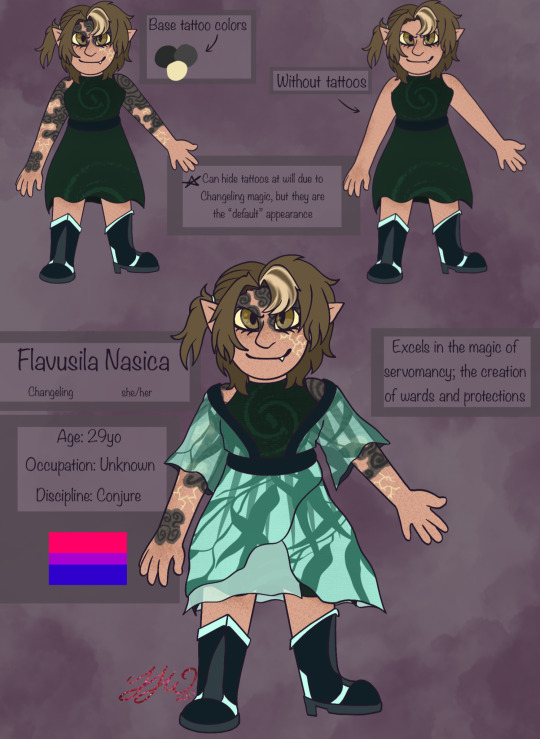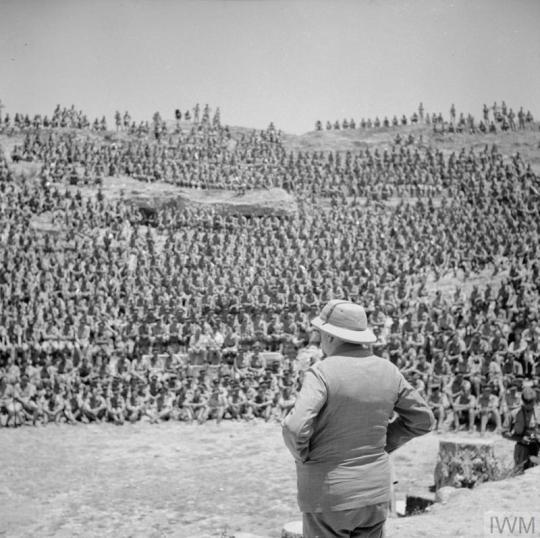#nasica
Text

Long-billed Woodcreeper (Nasica longirostris), family Furnariidae, order Passeriformes, Ecuador
photograph by Roger Ahlman
http://www.pbase.com/ahlman
339 notes
·
View notes
Text

«Y vemos que los artistas dionisiacos muchas veces contienden entre ellos con negligencia en los teatros, sin ánimo y sin esmero. Pero cuando existe contienda y porfía con otros, no solo se cuidan de estar más atentos ellos mismos, sino que también se cuidan más de su instrumento, tensando las cuerdas y ajustando y tocando sus flautas con gran armonía. Por eso el que ve que su enemigo es un rival de vida y fama pone más atención en sí mismo, examina con cuidado sus acciones y ordena su vida. También esto es propio del vicio: avergonzarse ante los enemigos más que ante los amigos por los errores que cometemos. De ahí que Nasica, cuando algunos creían y decían que los asuntos de los romanos estaban seguros después de haber aniquilado a los cartagineses y sometido a los aqueos, dijo: “Precisamente ahora estamos en peligro, pues no hemos dejado a quién temer ni ante quién avergonzarnos”.»
Plutarco: Sobre la amistad y cómo sacar provecho de los enemigos. Editorial Alma, pág. 21. Barcelona, 2023.
TGO
@bocadosdefilosofia
@dias-de-la-ira-1
#plutarco#Πλούταρχος#plútarjos#plutarchus#plutarco de queronea#sobre la amistad y cómo sacar provecho de los enemigos#enemigos#verguenza#nasica#moral#ética#filosofía griega#filosofía latina#filosofía greco-latina#consejos morales#filosofía antigua#estatua de plutarco#acicate moral#museo arqueológico de delfos#teo gómez otero
4 notes
·
View notes
Text
Today Klaus Kickenklober as...
Series 6 Post 17: God of blacksmiths, metalworking, carpenters, craftsmen, artisans, sculptors, metallurgy, fire and volcanoes.
🌸 Hephaestus crafted much of the magnificent equipment of the gods, and almost any finely wrought metalwork imbued with powers that appears in Greek myth is said to have been forged by Hephaestus. He designed Hermes' winged helmet and sandals, the Aegis breastplate, Aphrodite's famed girdle, Agamemnon's staff of office, Achilles' armour, Diomedes' cuirass, Heracles' bronze clappers, Helios' chariot, the shoulder of Pelops, and Eros's bow and arrows.
🌸 Hephaestus built automatons of metal to work for him or others. This included tripods with golden wheels, able to move at his wish in and out the assembly hall of the celestials; and servant "handmaidens wrought of gold in the semblance of living maids", in them was "understanding in their hearts, and speech and strength", gift of the gods. They moved to support Hephaestus while walking.
🌸 Some versions of the myth state that Zeus did not return the dowry, and in fact Aphrodite "simply charmed her way back again into her husband’s good graces." In the Iliad, Hephaestus is presented as divorced from Aphrodite, and now married to the Grace Aglaea. In the Theogony, Aglaea is presented as Hephaestus' mate with no apparent mention of any marriage to Aphrodite.
🌸 Hephaestus is to the male gods as Athena is to the female, for he gives skill to mortal artists and was believed to have taught men the arts alongside Athena. At Athens, they had temples and festivals in common. Both were believed to have great healing powers, and Lemnian earth from the spot on which Hephaestus had fallen was believed to cure madness, the bites of snakes, and haemorrhage; and priests of Hephaestus knew how to cure wounds inflicted by snakes.

#singmovie#sing2#singfanart#illuminationetertainment#klaus#klauskickenglober#klaussingmovie#nasica#klausthemonkey#canoncharacter#cc#godhephaestus#efesto#greekmyth#greekpantheon
5 notes
·
View notes
Text
Marcus Brutus and the conspirators: Caesar's leaving for Parthia in three weeks! How can we plan an assassination with so little time?!
The ghost of Scipio Nasica Serapio: Pathetic. He doesn't even have bodyguards. In my day we'd just walk up to him in the forum and beat him to death with chairs.
119 notes
·
View notes
Text

The Battle of Pydna, 168 BC by Peter Connolly
#battle of pydna#art#ancient rome#peter connolly#rome#macedonia#macedon#roman#romans#macedonian#phalanx#pikes#antiquity#roman republic#third macedonian war#greece#history#macedonian wars#ancient greece#perseus#lucius paullus#lucius aemilius paullus#publius cornelius scipio nasica#mediterranean#europe#european
60 notes
·
View notes
Note
idea. lucius acting like a video game streamer broadcasting his fights and battles live.
"Okay fem and tomboys! Today we're invading... idk some shithole, who cares. We'll be fighting some loyalists marines though and I just snorted some crushed warp rock from a bunch of talking giant rats so LETS GO!"

Yep, that's totally his style. Absolutely fantastic idea.
And finally a Warhammer-channel I would subscribe to in a heartbeat!
And @legiopraesagio got a suggestion for a soundtrack:
youtube
66 notes
·
View notes
Text

i love it when confusing grammar makes it sound like there were beautiful and fruitful gay marriages going on in ancient rome
#congratulations to scipio nasica and l. licinius crassus <3 its a boy!#(this is on the metellus scipio wikipedia page btw)
34 notes
·
View notes
Text
Surprisingly, Quintus Caecilius Metellus Pius Cornelianus Scipio Nasica fits the AO3 tag character limit.
46 notes
·
View notes
Text




More references!
#my art#my ocs#digital art#character design#procreate#oc: flavusila nasica#oc: angeles del bosque#oc: marlow vos#oc: storm clouds#augh wait i should tag the stories theyre in too#this is why i usually only post refs from the same story so its just one tag 🤟😔#os: velocity#os: tales of the lady red#os: bury them quick/deep
10 notes
·
View notes
Text
quintus caecilius metellus pius cornelianus scipio nasica owner of several large flocks of geese
10 notes
·
View notes
Text
"im so normal about this villain OC. i can leave them evil" (lying through my teeth)
#this is specifically about#oc: videres nasica#video has been on my mind constantly 🤟😔#would not be surprised if they end up in my top 10 fave ocs list soon#i just! sometimes i love a villain OC so much that i cant handle leaving them awful/fucked up!#especially ones like video....they never had a chance#the thought of them never getting a chance to grow and be better makes me unfathomably sad#even if narratively wrt my current plot of Velocity....it would make the most sense if Video dies after becoming the main antagonist#but i dont want them to ): i want them to at least START on a path to redemption#i wasnt supposed to get this attached to video!!!!! fuck!!!!!
4 notes
·
View notes
Text
trial of Publius Cornelius Scipio Nasica Serapio
date: 132 BCE
charge: senatorial quaestio [inquiry] (homicide of Ti. Gracchus)
defendant: P. Cornelius Scipio Nasica Serapio cos. 138 (ORF 38.III [addenda A.2])
prosecutor: M. Fulvius Flaccus pr. by 128
other: P. Mucius Scaevola cos. 133 rejected as juror
Cic. de Orat. 2.285; Plut. Ti. Gracch. 21.2; see also V. Max. 5.3.2e
Magie, RRAM 2.1033, n. 1
308 notes
·
View notes
Photo


Ceterum censeo Carthaginem esse delendam.*
- Cato the Elder
Furthermore, I consider that Carthage must be destroyed.*
At the turn of the 2nd century BCE, the Second Punic War between Carthage and Rome had ended. Rome was eventually victorious, but had suffered some significant and bad defeats. The peace treaty was even tougher for Carthage – it stripped them of many of their territories, their wealth, and restricted their actions. Fast forward 50 years later, there was another conflict between Carthage and Rome – this time in a Punic-turned-Roman-city called Massinissa. Marcus Porcius Cato, a famous Roman orator and senator, was sent to Massinissa to investigate. He had fought in the Second Punic War in his 20s. Cato was surprised to see that, since the end of the Second Punic War, Carthage had become a thriving and wealthy city again.
When Cato came to back to Rome, he called for the war against Carthage – a war to stop them once and for all. He ended his speech with the phrase: Carthago delenda est. (Carthage must be destroyed.)
Plutarch tells us that Cato's call ended his every speech in the Roman Senate, 'on any matter whatsoever', from 153 BC to his death aged 85 in 149. Scipio Nasica - son-in- law of Scipio Africanus, conqueror of Hannibal in the Second Punic War (218-202 BC) - would always reply: 'Carthage should be allowed to exist'. But such challengers were silenced. Rome decided on war 'long before' it launched the Third Punic War just prior to Cato's death. One of his last speeches in the Senate, before a Carthaginian delegation in 149, was critical:
“Who are the ones who have often violated the treaty? . . . Who are the ones who have waged war most cruelly? ... Who are the ones who have ravaged Italy? The Carthaginians. Who are the ones who
demand forgiveness? The Carthaginians. See then how it would suit them to get what they want.”
The Carthaginian delegates were accorded no right of reply. In 146 BC, nearly 8 years after Cato ventured back to Carthage and saw its wealth, would Carthage attack Massinissa and give Rome a reason to star the Third (and final) Punic War.
Rome soon began a three-year siege of the world's wealthiest city. Of a population of 2-400,000 at least 150,000 Carthaginians perished. Appian described one battle in which '70,000, including non-combatants' were killed, probably an exaggeration. But Polybius, who participated in the campaign, confirmed that 'the number of deaths was incredibly large' and the Carthaginians 'utterly exterminated'. In 146, Roman legions under Scipio Aemilianus, Cato's ally and brother-in-law of his son, razed the city, and dispersed into slavery the 55,000 survivors, including 25,000 women. Plutarch concluded: 'The annihilation of Carthage . . . was primarily due to the advice and counsel of Cato'.
It was not a war of racial extermination. The Romans did not massacre the survivors, nor the adult males. Nor was Carthage victim of a Kulturkrieg. Though the Romans also destroyed five allied African cities of Punic culture, they spared seven other towns which had defected to them. Yet, the Carthaginians had complied in 149 with Rome's demand to surrender their 200,000 individual weapons and 200 catapults.
Little did they know that the Senate had already secretly decided to destroy Carthage for good, once the war is over. The surprising new demand that they abandon their city meant abandoning its sanctuaries and religious cults to abandon their city, meant abandoning its sanctuaries and religious cults. And in this Carthaginians resisted in vain. Rome opted for the destruction of the nation.
Carthago delenda est has become somewhat of a rallying call against a common enemy - a call for total war.
None of this was lost on Churchill as he addressed British troops in the old Roman amphitheater at Carthage, Tunisia. Nothing short of the total destruction of Nazi Germany for the sake of civilisation and humanity were at stake. The Nazis were an existential threat. Like Cato, Churchill knew the power of oratory to move men into action.
Photo: Churchill leaves the old Roman amphitheatre with Lieutenant General Kenneth Anderson after addressing British troops, 1 June 1943.
#cato#roman#latin#classical#quote#rome#carthage#punic wars#war#total war#churchill#winston churchill#british army#second world war#tunisia
42 notes
·
View notes
Text
When Klaus started dancing he was still a seven-year-old boy and, it can be said, that his life always faces him on tiptoe.
From the age of 13/25 his orange mantle and his elegance were the emblem of a young man who had just blossomed, his temperance and character was immense and together with his skill was the envy and pride of dance school he attended.❤❤❤

#singmovie#sing2#singfanart#illuminationetertainment#klaus#klauskickenglober#klaussingmovie#klausthemonkey#nasica#canoncharacter
5 notes
·
View notes
Text
Stabbing: Messy. Cliché. Ruins your toga (expensive). May get you arrested for carrying a weapon in Rome.
Ripping apart his chair and beating him to death with it: Innovative. Laundry-friendly. Full-body workout. Demonstrates your passion and evokes the symbolic irony of a man being destroyed by his pursuit of power (a throne). Poetic, even.
53 notes
·
View notes
Text
Too many Scipios
Lucius Aemilius Paullus had a son named Lucius Aemilius Paullus Macedonicus. LAP senior's daughter married Scipio Africanus. Together they had three sons. Their names were Lucius Cornelius Scipio, Gnaeus Cornelius Scipio and Publius Cornelius Scipio. The couple also had two daughters who were both named Cornelia. The elder of the two Cornelias married Publius Cornelius Scipio Nasica Corculum (no relation). If any of this made you go cross eyed, you might not be cut out for Roman history. Welcome to the club
7 notes
·
View notes